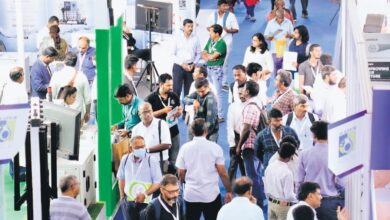In Chandigarh, migrant voters may control the electoral process
Chandigarh: Uttarakhand, Bihar, Uttar Pradesh, and Himachal Pradesh account for more than one-third of the state’s total votes, meaning that these four states might ultimately determine the outcome of the lone Chandigarh Lok Sabha seat.

Over time, these voters—or their families—have moved to the city. Of the approximately 6.5 lakh voters in the city, 1.5 lakh are from Bihar and Uttar Pradesh.
A significant portion of this mixture originates from the Purvanchal region. Similar estimates put the number of voters of Himachal and Uttarakhand origin at around one lakh.
As a result, the political environment and voter mix of the city have seen a significant increase in the geographical footprint of these voter collectives.
Political parties of all shades have been pursuing this voter mix for a long time, investing a lot of time and money in the process. To appeal to various voting categories, political parties have customized their campaigns and invited some “star campaigners.”
Although political parties have seen them as “vote banks,” these groupings’ homogeneity has changed over time. There are three main groups within this: the younger generation that was born and raised in the city, the elder generations who themselves moved to the city, and recent migrants.
The previous mayor and president of the Chandigarh Congress, Subhash Chawla, said, “It has gotten harder over time to predict these constituents’ voting patterns.” The majority of voters over the age of 50 still feel a sense of nostalgia and kinship with their home states. They continue to monitor political happenings in these states and are somewhat impacted by political trends and advancements in their parent states.
The migrants who have been living in the city for the last ten or so years make up another portion of this mixture. According to Chawla, “they generally vote in accordance with their parent states’ most recent voting pattern, retaining much of their political behavior.”
The third set of voters, who are younger overall and were raised in the city, has little to no ties to the states where their parents were born.
Political parties find it more difficult to approach the three categories as a homogeneous group because of the differences in aspirational levels among them.
In the past, political parties may have targeted certain parts of the city to reach out to these people, especially when elections were approaching. The migrants from UP-Bihar were mostly centered in certain areas of the city. “Now, that has mostly changed. BJP state vice president Shakti Prakash Devshali said, “Although there are still some parts of the city where these voters are concentrated, overall, they have dispersed across the city as they climbed up the social and economic ladder.”
There is still a significant concentration of these groups in some places, such as Mauli Jagran, Dhanas, Vikas Nagar, etc.
These groups used to follow the “local” leaders, but as time has gone on, strong leadership has emerged from inside, further confounding political parties’ regional jigsaw puzzle. This leadership transcends political boundaries. The fact that these villages now have more council members in the municipal corporation speaks to the growing influence these areas have in local politics. “These leaders are often associated with a certain political party, although their allegiances might shift at any moment, and younger leaders are often succeeded by more experienced ones. Thus, things are always changing these days, a senior BJP official who wished to remain anonymous stated.







